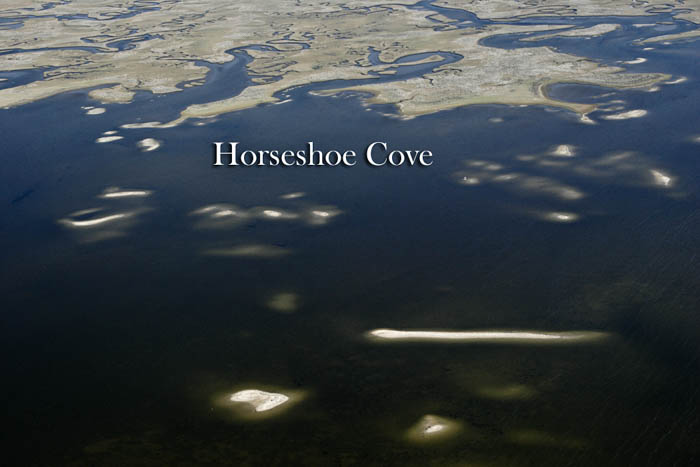Horseshoe Cove–A Hidden Fishing Destination On Natural North Florida’s Gulf Coast
Florida’s Big Bend coastline is the longest stretch of undeveloped shoreline in the lower 48 states, and Horseshoe Cove and the surrounding area is an excellent example of a place that hasn’t been overdeveloped or encroached upon by “civilization”. I like that—and so do the fish!
It’s located south of the “forgotten” village of Horseshoe Beach in Dixie County, and north to Shired Island, and for many boats and boaters it isn’t very hospitable. It is, however, the perfect place for lots of game fish, especially redfish and spotted seatrout, to gather in late fall.
At several locations along our Big Bend, Mother Nature has provided bays and coves that act as traps for tidal movement and catch basins for bait fish and predators. Waccasassa Bay, Suwannee Sound, Deadman Bay and Horseshoe Cove are good examples. But Horseshoe Cove, littered with shell bars and fringed with coastal creeks, is probably the least traveled and least fished of them all, despite the general growth of sport fishing over the past decade. It’s just a lonesome place, and one that’s worth the trip!
A factor that makes this stretch of shoreline lonesome is that it’s over 20 miles from the Big Bend’s main north-south route, US19/98. Once you get to Horseshoe Beach, via CR351 from Cross City, you’ll find two excellent public ramps as well as a sling-style boatlift at Horseshoe Beach Marina. Another option is to turn south off CR352 onto CR357 and head to Shired Island and use the public ramp near the campground there. There’s also a shallow paddlecraft launch near the observation tower at the back of Fishbone Creek, off CR357, the Shired Island road.
Once wet, you can aim your boat towards the fish. If you’re leaving Horseshoe Beach, run out the main Gulf channel to about marker #10 and then carefully run due east towards shore. If you launch at either Shired Island or Fishbone Creek, you’re closer to the action. In either case, Horseshoe Cove isn’t a place where a bay boat will feel at home. Boats with shallow drafts, including paddlecraft, are essential here. You’ll be fishing near shell bars and in the mouths of coastal creeks—places that are generally unfriendly towards gel coats and lower units. Personally, my tactic is to idle my flats skiff to within a mile of shore, power down, and then let my Minn-Kota trolling motor take over. Then, if I decide a bar or creek mouth has potential, with usually with mullet jumping, I ease into casting position or even get overboard and wade. And, as a reminder, a rising tide is almost essential here, unless you want to stay for the duration of the low tide cycle, or fish from a paddlecraft. Extreme tides can dry this place quickly.
In the years I’ve fished Horseshoe Cove, there have been a few earth-moving weather events, like Hurricane Hermine, the edge of Hurricane Irma, and a number of smaller storms. Fish-friendly places, like the “straight bar”, the “little round bar” and “the big shell bar” that I marked on my GPS ten years ago have either changed or been washed away. But there are new ones that have taken their places. Look for bars that, during the middle of a rising tide, are just cresting the water’s surface and fish into the incoming current. Creeks like Butler, Amason and Fishbone are pretty much the same. Stealth is critical here, and that’s my reason for wading. Put your boat either behind the bar or anchor a long cast from a creek mouth and be careful to not splash around, high-five your fishing buddy or slam a hatch or cooler top. You’ll find some top slot reds and seatrout here, but none are so large that you can’t handle them with 2500-class spinning tackle, spooled with 10-pound braided line. As I said, long casts are critical. For bait, something live under a popping cork is acceptable, but my preference is to throw artificial lures. If you’re there early in the day, throw topwaters like MirrOlure’s Top Dog. As the sun gets up, try a slow-suspending MirrOdine XL swim bait. Or, if the tide’s running hard, try drifting a free-lined D.O.A. 3-inch shrimp back towards you in the current. In creek mouths, you may find deep cuts that are holding fish. If so, try bouncing a D.O.A. TerrorEyz slowly over the bottom, but be prepared to snag up and lose a few of these excellent sinking lures on the ragged bottom.


